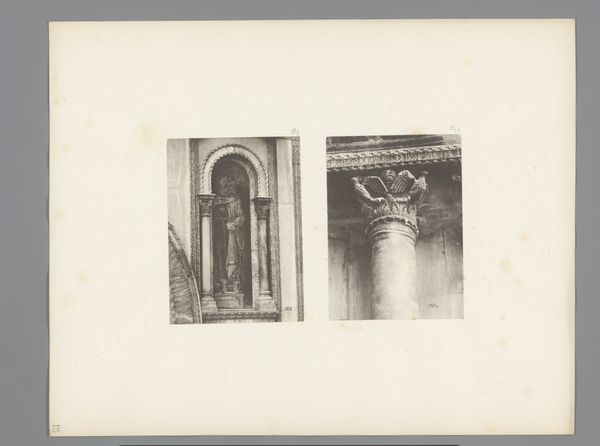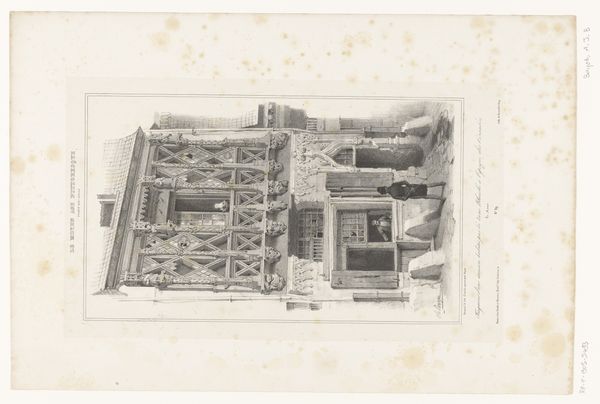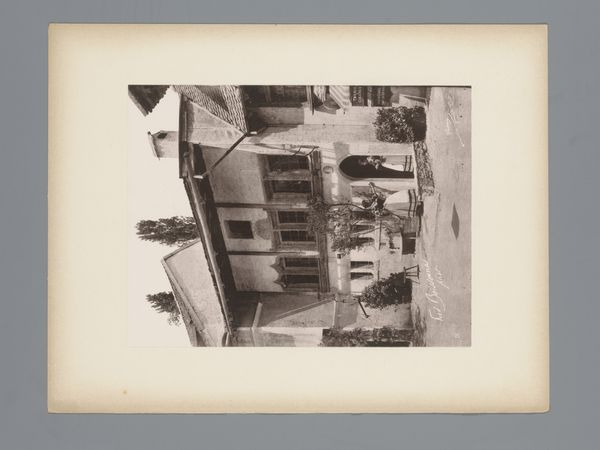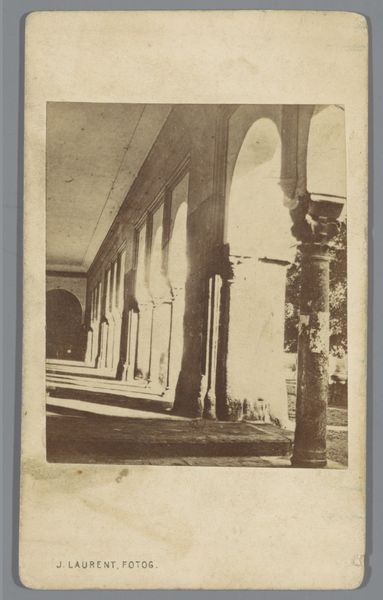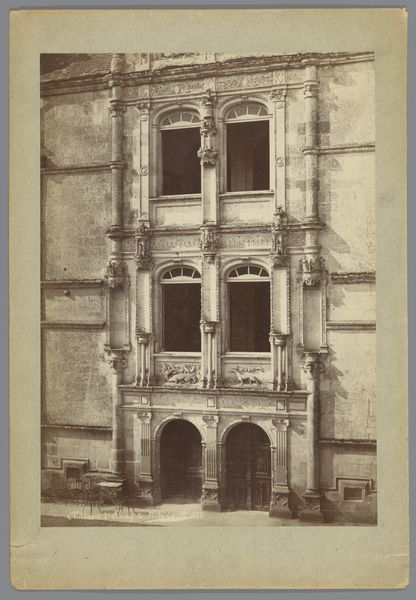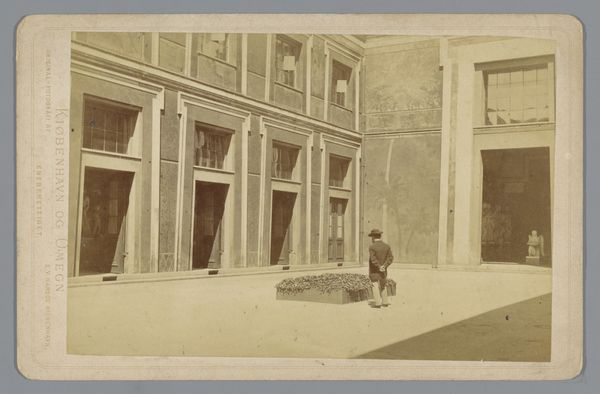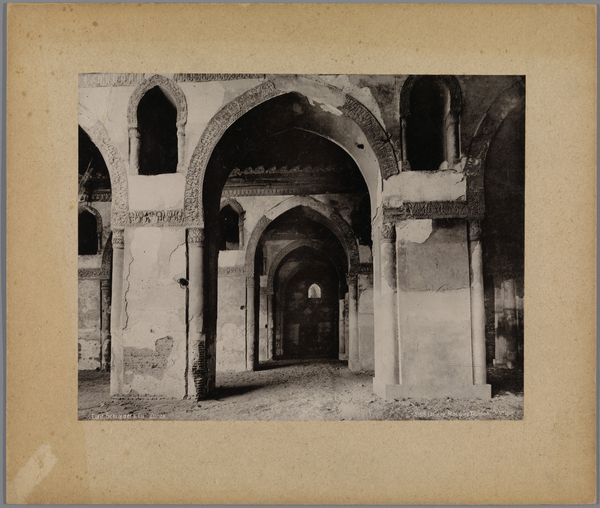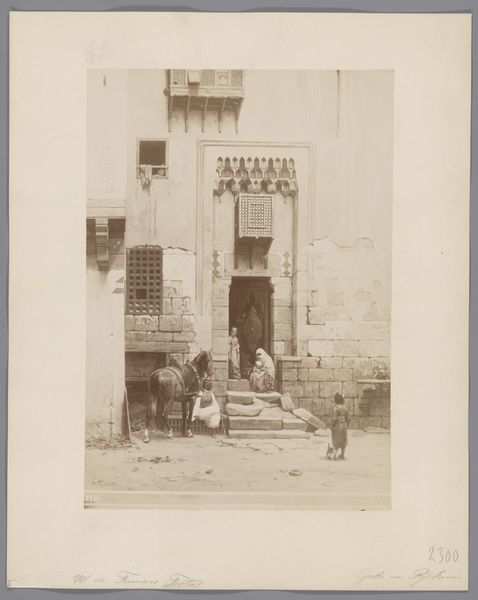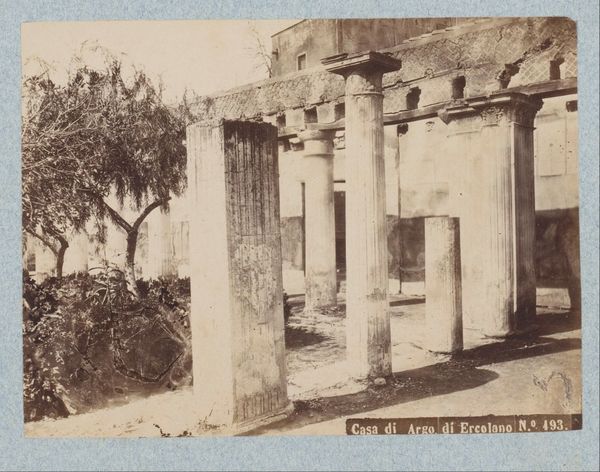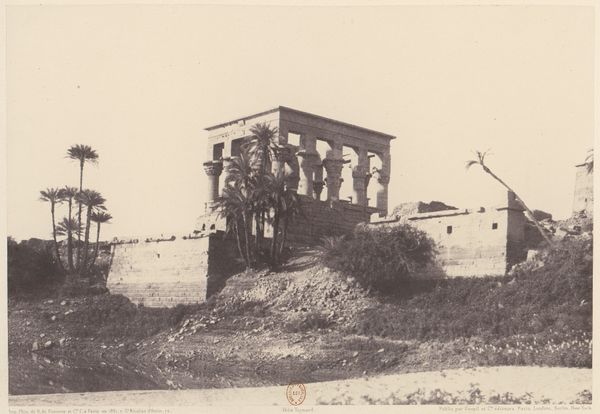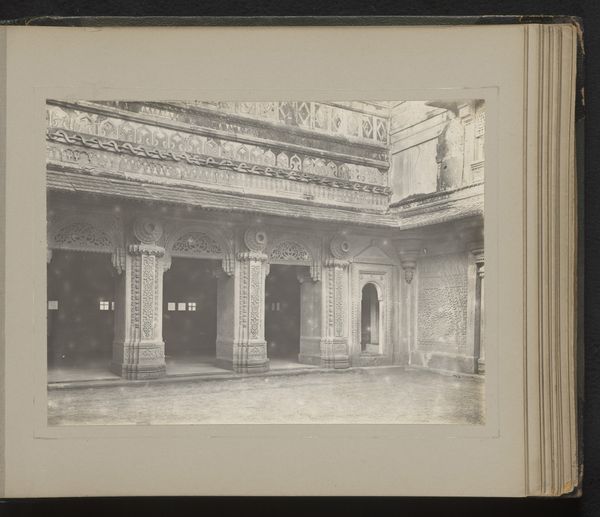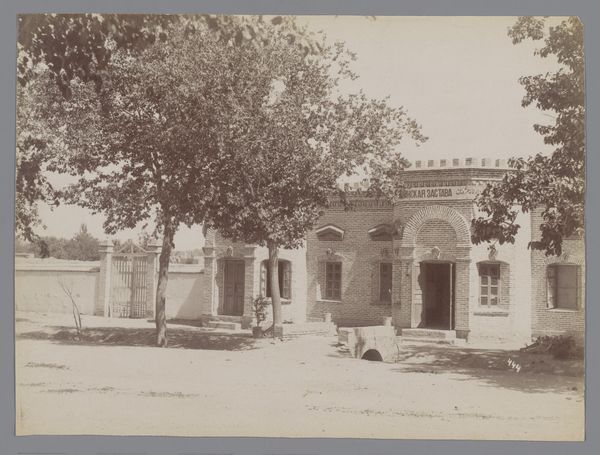
photography, architecture
#
photography
#
islamic-art
#
architecture
#
realism
Dimensions: height 210 mm, width 268 mm
Copyright: Rijks Museum: Open Domain
Curator: Ah, what a fascinating photograph. This is “Facade van de Groene Moskee in Bursa” – that’s the Façade of the Green Mosque in Bursa – by Sébah & Joaillier, taken sometime between 1888 and 1900. It's a compelling glimpse into Ottoman architecture captured through a photographic lens. Editor: My first impression is one of quiet grandeur. The starkness of the façade, the detail in the carvings—it almost feels like peering into a forgotten dream. Curator: Exactly! The way they've framed the intricate stonework—the geometry, the floral patterns—it speaks volumes about the artisans' dedication, the sheer human effort embedded in faith. It also reflects an emerging interest in Realism within photography itself. Editor: I see those geometrical patterns not just as artistic expression but as complex symbolism reflecting Islamic philosophy, you know? The constant repetition can point to the vastness and unity of the divine, a visual mantra. But look at the neglect, too; the marks of decay almost shout about the ephemerality of empires. This wasn’t captured in a vacuum. It came at a time of significant social and political shifts within the Ottoman Empire. Curator: Absolutely, context is key. I wonder though… Do you think the photographers intended to convey a sense of decay, or were they simply documenting what they saw? There’s a subtle melancholy to it that's really potent for a so-called "realistic" style. The texture tells a story that crisp, idealized architectural drawings often miss. Editor: Perhaps both? The inherent bias in documentation. A European lens viewing a space that may have not necessarily felt it should have been there’s to photograph to begin with. Still, I agree; the melancholic effect is undeniable. That sepia tone adds an antique grace, and reminds us to confront historical realities in their own time, not just ours. Curator: Yes, that sepia tone creates an antique sense of time that really permeates through this particular photograph, an effect that makes you reflect. What remains, and what’s inevitably lost. It gives this photography almost a romantic, but somber note. Editor: For me, this image is more than just a picture. It sparks conversations about power, belief, time, and cultural exchange. It makes one stop and ponder not just what we see but what stories lay hidden behind these walls. Curator: Beautifully said! The silent walls are in themselves screaming to us. It's a potent reminder that buildings are not just static structures, but stages upon which history and humanity play out in equal measure.
Comments
No comments
Be the first to comment and join the conversation on the ultimate creative platform.
